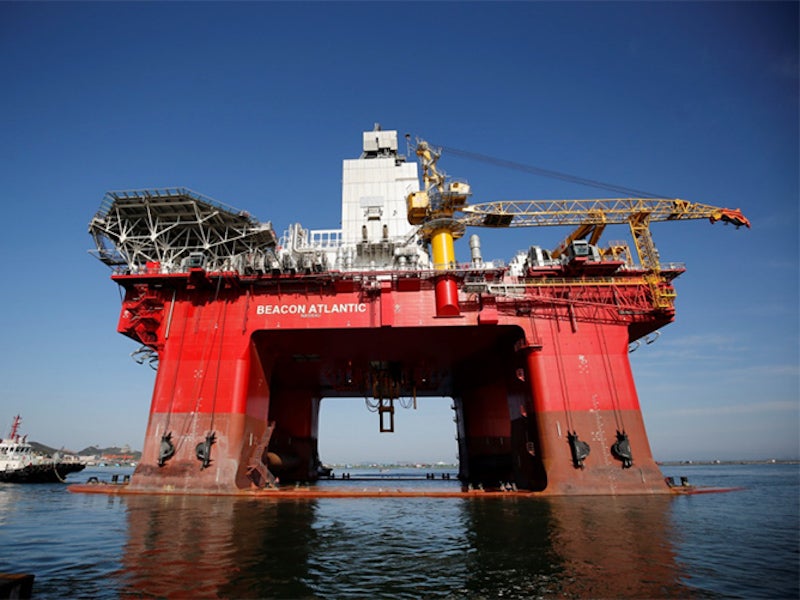The Duva oil and gas field, developed as a subsea tie back to the Gjøa field in the Norwegian North Sea, came on stream in August 2021.
Neptune Energy operates the field with 30% interest, while the other development partners are Idemitsu Petroleum Norge (30%), PGNiG Upstream Norway (30%), and Sval Energi (10%).
The Norwegian Petroleum Directorate approved the plan for development and operation (PDO) of the Duva field as well as the Gjøa P1 field in June 2019. Both the fields were developed on a fast-track basis despite the challenges posed by the Covid-19 pandemic, with production from the Gjøa P1 development starting earlier in February 2021.
The key contracts for the Duva field development were awarded by the second quarter of 2019, following the final investment decision on the project in February 2019.
The total investment on the Duva oil and gas project is estimated to be NOK5.5bn ($640m). The field is expected to produce for a minimum of ten years with a maximum output of 30,000 barrels of oil-equivalent per day (boepd).
Duva filed location and discovery details
The Duva oil and gas field is situated in 340m-deep waters within the production license (PL) 636 operated by Neptune Energy in the Norwegian continental shelf, approximately 35km off the coast of Hordaland, Norway. The PL 636 was granted in February 2012 and will be valid until February 2044.
The Duva field was discovered by the 36/7-4 Duva discovery well, which was drilled to a 2.7km vertical depth using the Transocean Arctic semi-submersible drilling rig in 2016. It was the first exploration well drilled in PL 636.
The Duva subsea development lies 14km north-east of the Gjøa field located in PL 153, which is also operated by Neptune Energy, while the Troll field, which is operated by Equinor, is located 60km to the south.
Duva field reservoir details
Situated at a depth of 2.2km beneath the seabed, the Duva field’s reservoir contains oil and gas resources in turbidite sand bodies of the Early Cretaceous age in the Agat Formation.
The field was estimated to hold reserves of 71 million barrels of oil-equivalent (boe) with 56 % gas at the beginning of production in August 2021.
Duva field development details
The Duva field development involved the installation of a four-slot subsea template connected to three oil-producing wells and one gas-producing well. The Duva well stream is sent to the Gjøa semi-submersible platform for processing and export. The field is also operated from the Gjøa platform through a dedicated umbilical connection.
The four production wells at the field were drilled by the harsh environment semi-submersible drilling rig Beacon Atlantic (now called Deepsea Yantai), owned by China International Marine Containers (CIMC) and managed by Odfjell Drilling, a drilling contractor based in Norway.
Gjøa platform details
Operational since October 2011, Gjøa was the world’s first floating oil and gas platform to be supplied with electricity from the shore. The platform has a capacity to produce and export 87,000 barrels of oil and 17 million cubic metres (Mcm) of gas a day.
Utilising hydroelectric power from the shore, the platform accounts for less than half of CO2 emissions per barrel of oil-equivalent (boe) output, compared to the average in the Norwegian North Sea.
The oil produced on the Gjøa platform is transported to the Mongstad terminal through a 53km-long pipeline connecting the Troll Oil Pipeline II, while the gas is exported to the St Fergus gas terminal in Scotland, UK, through a 130km pipeline connecting the Far North Liquids and Associated Gas System (FLAGS) pipeline.
Contractors involved in the Duva oil and gas project
TechnipFMC was awarded an integrated engineering, procurement, construction, and installation (EPCI) contract for the subsea umbilicals, risers and flowlines (SURF), as well as the subsea production system for the Duva project in April 2019.
Rosenberg WorleyParsons received an engineering, procurement, construction, installation, and commissioning (EPCIC) contract for topside modifications on the Gjøa platform in June 2019.
CIMC Raffles Offshore Engineering, a subsidiary of CIMC, and Odfjell Drilling were awarded the drilling contract for the Duva field development in March 2019.
Hustad & Granaas (H&G) was engaged to conduct an independent review of the Duva offshore development project in January 2019.





